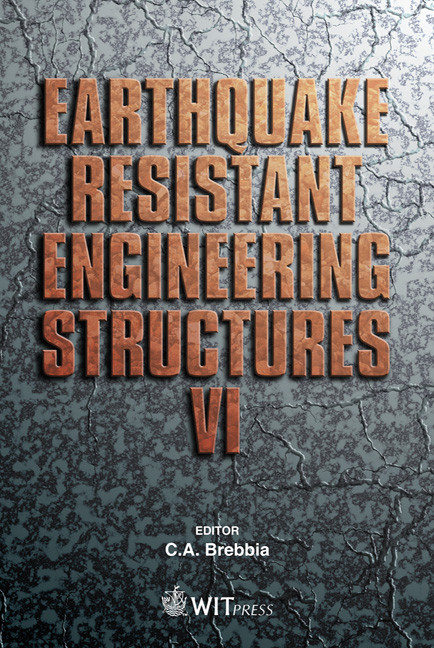Empirical Fragility Curves For Peruvian School Buildings
Price
Free (open access)
Transaction
Volume
93
Pages
9
Published
2007
Size
573 kb
Paper DOI
10.2495/ERES070261
Copyright
WIT Press
Author(s)
A. Muñoz, M. Blondet, R. Aguilar & M.-A. Astorga
Abstract
This paper describes an estimation of economic losses in Peruvian educational buildings for different levels of seismic action. Opinions of experts were processed to generate seismic intensity versus damage relationships. Economic losses were then expressed through fragility curves and damage matrices. For frequent earthquakes (50-year return period) a 50% loss would be expected in adobe buildings and 20% loss in confined masonry structures built before 1997. During severe earthquakes (500-year return period) only confined masonry structures built after 1997 would be repairable at a cost of around 40% of their original cost. Keywords: fragility curves, damage matrices, 1997 Peruvian seismic code, seismic lose, types of Peruvian school buildings. 1 Introduction After earthquakes, Peruvian authorities allocate large quantities of resources to recover the educational infrastructure affected. The recovery usually consists in repairing the least affected buildings or retrofits and reinforcing the worst affected ones. Experience has shown that damage to buildings could be significantly reduced by strengthening work done before earthquakes. It is not possible for the Peruvian government to handle a national strengthening program, so it is necessary to develop a plan to reduce the infrastructures’ seismic risk gradually. As a contribution to this national plan, we have identified the most representative buildings and we have made an estimation of the seismic behaviour using tools to quantify losses.
Keywords
fragility curves, damage matrices, 1997 Peruvian seismic code,seismic lose, types of Peruvian school buildings.





